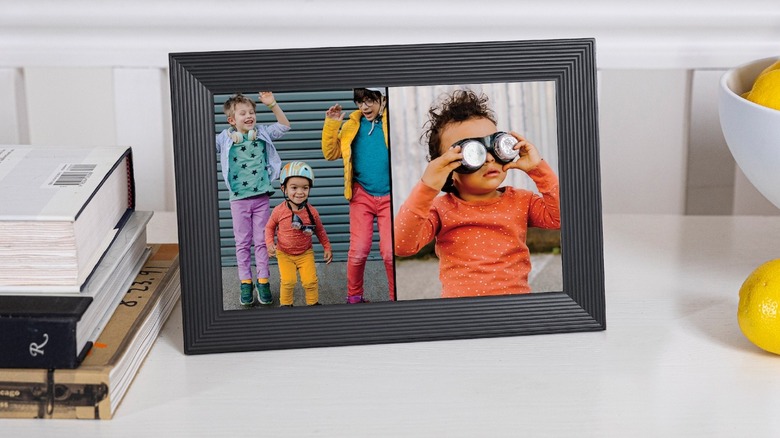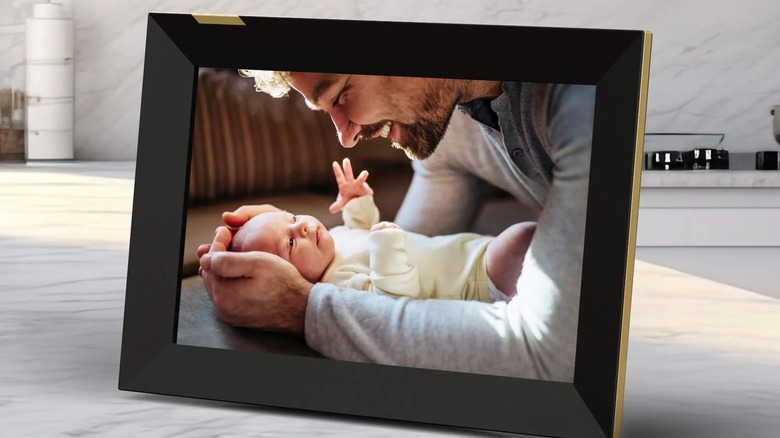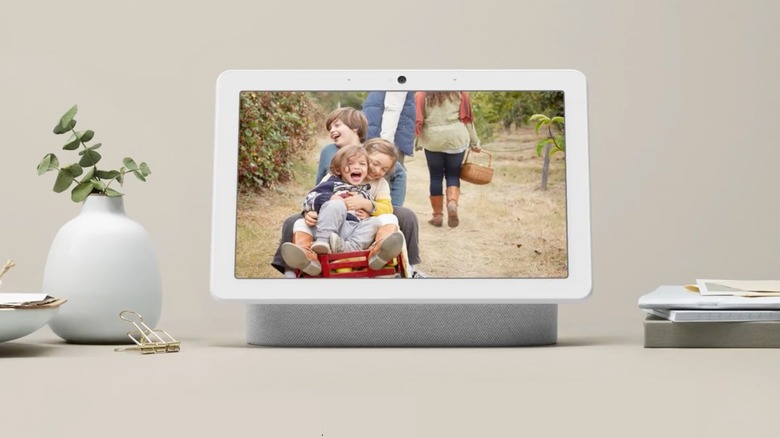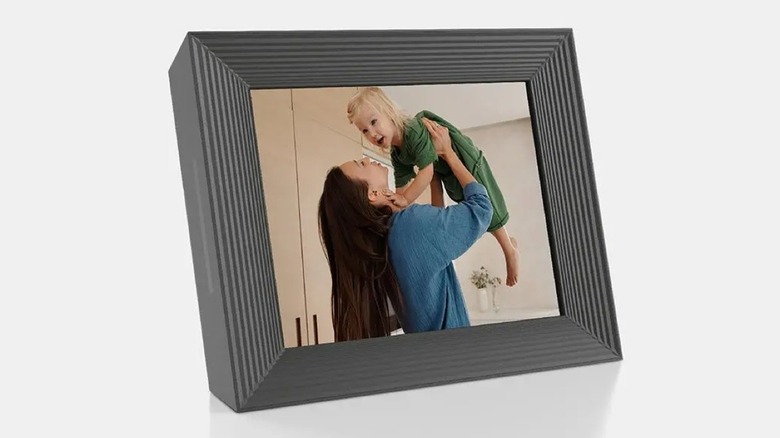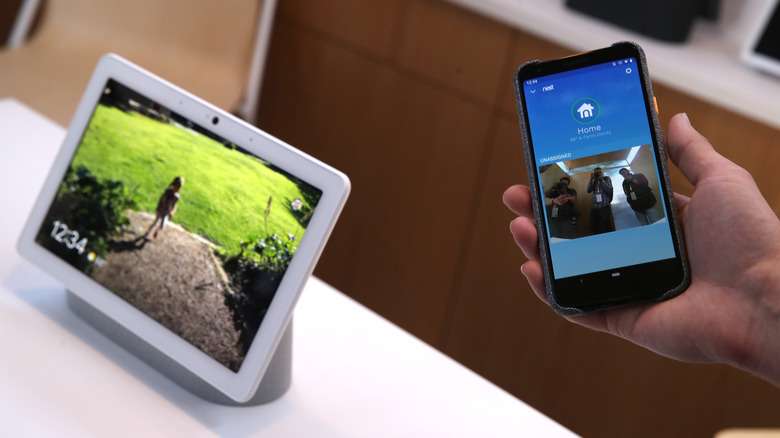5 Of The Best Digital Picture Frames In 2024
We may receive a commission on purchases made from links.
Thanks to smartphone cameras, most of us have more photos than we can keep track of. While cloud services like iCloud and Google Photos make it easy to back up and organize your entire collection, there are many photos that get buried in albums and folders and are rarely looked at.
That's where a digital picture frame can be a real winner. Older digital frames cycle through photos stored on an SD card, but modern ones connect to Wi-Fi, making it easy to upload photos through an app.
Digital picture frames also make a great gift, particularly for older relatives. Some frames even let you share specific photos with family members. For example, you can email photos of your graduation ceremony to your grandparents' digital frame.
You can always repurpose your old tablet into a digital picture frame or even make your own Raspberry Pi digital frame, but if you want something that's easy to set up, we've rounded up some of the best options you can buy in 2024. All the products in this list have been tested and recommended by established tech publications, including SlashGear. A more in-depth explanation of our selection process can be found at the end of this article.
Aura Carver
Aura is among the best-known brands when it comes to digital photo frames, and the Aura Carver is a popular option. The Carver has a 10.1-inch display with a resolution of 1,280 x 800 and a 16:10 aspect ratio.
The frame is designed for landscape orientation, so portrait photos are displayed side by side. While images can play in a slideshow, you can also swipe the touch bar to change photos. It also plays videos and has a speaker on the back.
The frame syncs to the Aura app, where you can upload photos and videos and even invite family and friends to share photos to your account. Aura offers unlimited cloud storage for photos and videos, which is a huge bonus. A great feature of the Aura Carver is that it can be bought as a gift and even set up with photos and Wi-Fi before being shipped.
The New York Times Wirecutter says that the display has good contrast and sharpness and automatically adjusts the brightness according to the ambient lighting in the room. Provided you haven't turned off the iPhone's Live Photos, the Aura Carver is one of the only frames that can play Apple's mini video clips. The 16:10 aspect ratio isn't ideal, but Aura does a good job of getting photos to fit the screen.
The Aura Carver is listed for $149 on Amazon and Aura's website and is available in Gravel and Sea Salt options.
Nixplay 10.1-inch Digital Frame
The Nixplay 10.1-inch Touch Screen Wi-Fi Digital Frame has a lot in common with the Aura Carver. It has a 1280 x 800 HD display, lets you invite friends and family to upload photos and videos, and can be set up and purchased as a gift. There are some key differences, though. The Nixplay has a touchscreen display and can be used in landscape or portrait mode, with AI automatically cropping photos to fill the frame, depending on the orientation.
The Nixplay app syncs with Apple Photos, Google Photos, Facebook, Instagram, and more — and comes with unlimited photo cloud storage — but unlike Aura, you don't get unlimited storage for videos. You can play videos up to 15 seconds in length, but if you upgrade to Nixplay Plus ($50 a year), you can play videos up to two minutes long, plus get other perks like a lifetime warranty, 25% off all frames, and the ability to manage up to 10 frames from a single account.
New York Magazine's The Strategist says the Nixplay's touch screen can be used to pause slideshows, change settings, and even "like" photos. In addition, the Nixplay can continue to display photos even when the Wi-Fi isn't working and you don't have internet access thanks to its 8GB internal storage.
The Nixplay 10.1-inch is available in White, Wood, Black/Silver, and Black/Gold colors and is currently listed for $140 on Amazon and $170 on Nixplay.
Loop Family Frame
The Loop Family Frame is designed to provide a social photo-sharing experience. The frame has a 10-inch touchscreen display and can be used only in landscape mode.
The Loop app functions like most popular social media apps. You can upload photos and videos to the app, add captions, and categorize them by channel. You can invite family members to share photos in the app and even leave likes or comments. Unlike other digital frames, you can also text photos to Loop.
The frame comes with 16GB of inbuilt storage, allowing it to display photos and videos even without a Wi-Fi connection. However, you will need Wi-Fi to receive new photos or play videos.
Wired says the Loop Family Frame is among the best digital photo frames, with good-quality photos and a stylish rose gold stand. Since it is a landscape photo frame, portrait photos can be displayed side by side, auto-stretched, or letterboxed with a blurred image of the same photo as the background. On the flip side, setting up the device needs to be done on both the frame and the app, and even if a frame is removed, your photos will remain on the app.
The Loop Family Frame is listed for $160 on Amazon and Loop.
Google Nest Hub
If you primarily use Google Photos to back up your photo collection, the Google Nest Hub and Nest Hub Max make great digital photo frames. While both devices are smart displays that let you play YouTube videos, control your smart home, and use Google Assistant, they can also display a slideshow of your favorite photos when not in active use.
Since the Nest Hub syncs with Google Photos, you can choose a specific album to display on the device. Alternatively, you can select a Live Album, which lets you display photos of specific friends and family members using facial recognition.
Alongside your photos, the Nest Hub can also display information like the weather, time, AQI, and photo data on the photo frame. The Nest Hub is meant to be used in landscape mode, and portrait photos are displayed side by side, with Google using AI to determine related photos.
In SlashGear's Google Nest Hub Max review, we found that the larger 10-inch display is great for viewing photos from afar. In addition, the ambient light sensor results in accurate-looking colors and low glare, even in low light. The Nest Hub is a cheaper alternative and features the same ambient light sensor to control display brightness and color calibration, making it ideal for use on a nightstand or desk.
The Google Nest Hub (2nd Gen) has a list price of $100 on Amazon and the Google Store. The larger Nest Hub Max will set you back by $229 and is available on the Google Store.
Aura Mason
The Aura Mason has a lot in common with the Aura Carver, but a few key differences make this digital frame stand out. For starters, it has a smaller 9-inch display and, unlike the Carver, can be used in both landscape and portrait orientation. The screen resolution is higher at 1600 x 1200 and has a 4:3 aspect ratio, which is ideal for most photos.
Other features are in line with the rest of Aura's frames. You can use the Aura app to add images to the frame and invite others to share photos. The frame can play videos thanks to a built-in speaker and comes with unlimited free cloud storage. While you can't use this storage to back up your photos and videos, you can upload as many files as you want to display. Photos can also be added to the Mason in advance if you want to buy it as a gift.
The Aura Mason features two touch bars — one on top and one on the side — making them accessible in both portrait and landscape orientation. Tom's Guide says that the Aura Mason displays vivid, realistic colors, and viewing angles are great, too. The ambient light sensor automatically changes brightness and turns off the display in low light.
The Aura Mason is listed for $199 on Amazon and Aura and is available in Graphite and White Quartz colors.
How we picked the digital picture frames
All the digital picture frames in this article (except the Google Nest Hub Max) are priced between $100 and $200, so you can choose the one that fits your budget and needs. In order to pick the frames for this article, we relied on positive reviews and recommendations from established tech publications like Wired, The New York Times, and Tom's Guide, in addition to our own SlashGear reviews.
We picked frames that rely on Wi-Fi to work since these are the easiest to set up. While some frames can continue displaying photos even without an active internet connection, you will need Wi-Fi for initial setup and receiving new photos. We also chose options that make it easy to upload photos, either through an app or by syncing with your cloud storage account.
